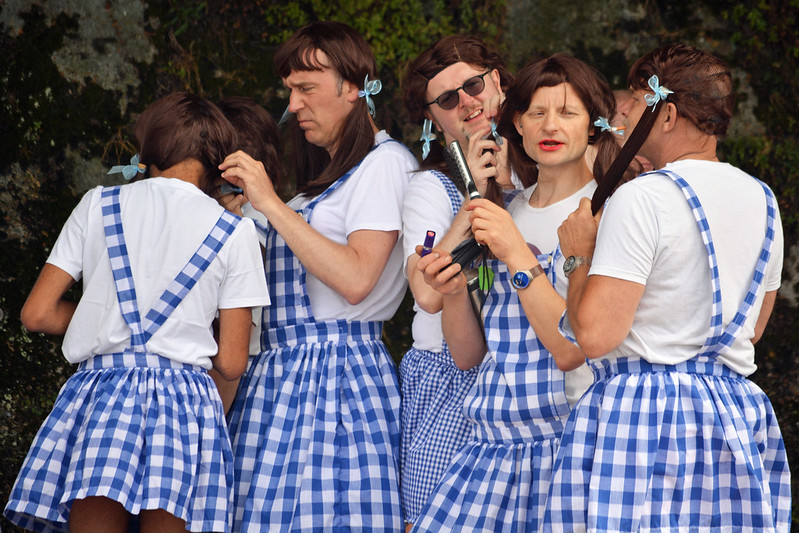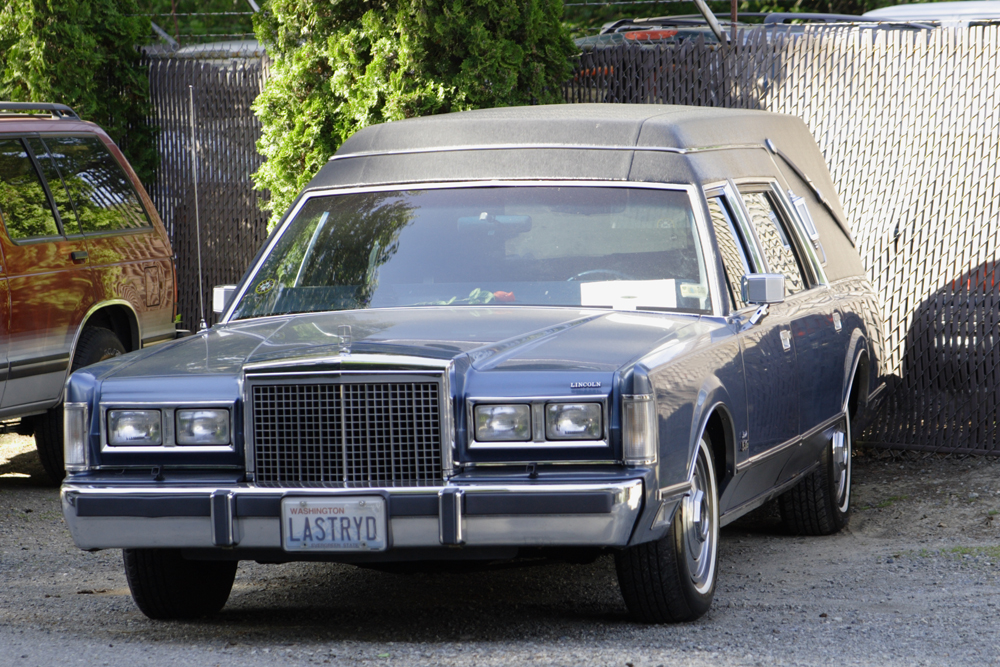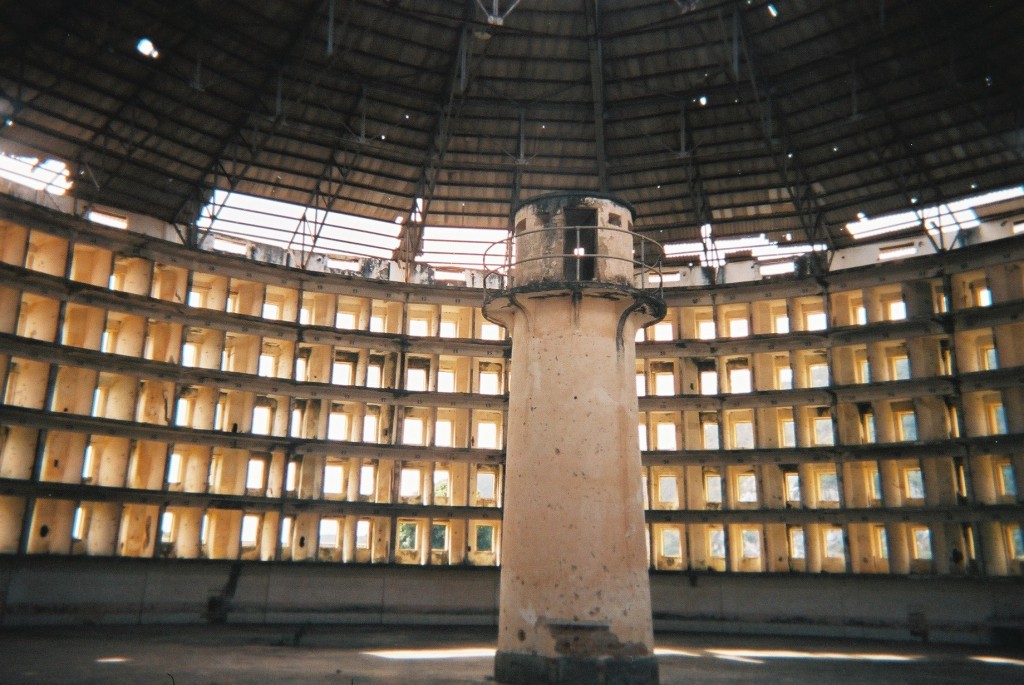Chapter 8. Deviance, Crime, and Social Control
8.1. Deviance and Social Control

What, exactly, is deviance? What is the relationship between deviance and crime? According to sociologist William Graham Sumner (1840–1910), deviance is a violation of norms. More specifically, it is a violation of established contextual, cultural, or social norms, whether folkways, mores, or codified law (1906). As discussed in Chapter 3. Culture, folkways are norms based on everyday cultural customs concerning practical matters like how to hold a fork, what type of clothes are appropriate for different situations, or how to greet someone politely. Mores are more serious moral injunctions that are broadly recognized in a society, like lying or stealing. Codified laws are norms that are specified in explicit codes and enforced by government bodies. A crime is therefore an act of deviance that breaks not only a norm, but a law. Deviance can be as minor as picking one’s nose in public or as major as committing murder.
John Hagen provides a typology to classify deviant acts in terms of their perceived harmfulness, the degree of consensus concerning the norms violated, and the severity of the response to them (1994). The most serious acts of deviance are consensus crimes about which there is near-unanimous public agreement. Acts like murder and sexual assault are generally regarded as morally intolerable, injurious, and subject to harsh penalties. Conflict crimes are acts like prostitution or eating psychedelic mushrooms, which may be illegal but about which there is considerable public disagreement concerning their seriousness. Social deviations are acts like abusing serving staff or behaviours arising from mental illness or addiction, which are not illegal in themselves but are widely regarded as serious or harmful. People agree that these behaviours call for institutional intervention. Finally there are social diversions like riding skateboards on sidewalks, overly tight leggings, or facial piercings that violate norms in a provocative way but are generally regarded as distasteful, or for some cool, but harmless.
The point is that the question, “What is deviant behaviour?” cannot be answered in a straightforward manner. No act or person is intrinsically deviant. This follows from two key insights of the sociological approach to deviance, which distinguish it from moral and legalistic approaches. Firstly, deviance is defined by its social context. This means that where norms differ — locally, cross-culturally or historically — what constitutes deviance also differs. To understand why some acts are deviant and some are not, it is necessary to understand what the social context is, what the existing rules are, and how these rules came to be established. If the rules change, what counts as deviant also changes. As rules and norms vary across cultures and time, it makes sense that notions of deviance also change.
Fifty years ago, public schools in Canada had strict dress codes that, among other stipulations, often banned women from wearing pants to class. Today, it is socially acceptable for women to wear pants, but less so for men to wear skirts. In a time of war, acts usually considered morally reprehensible, such as taking the life of another, may actually be rewarded. Much of the confusion and ambiguity regarding the use of violence in hockey has to do with the different sets of rules that apply inside and outside the arena. Acts that are acceptable and even encouraged on the ice would be punished with jail time if they occurred on the street. Whether an act is deviant or not depends on society’s definition of that act. Acts are not deviant in themselves.
The second sociological insight follows closely from the first. Deviance is not an intrinsic (biological or psychological) attribute of individuals, nor an intrinsic quality of the acts themselves, but a product of social processes. The norms that define deviance are themselves continually defined and redefined through ongoing social processes — moral, political, legal, cultural, etc. Similarly, to become deviant means to be assigned a deviant identity or to actively assume a deviant identity. It is the outcome of a process of identity formation. It is not a single rule breaking act that defines someone as deviant. Being deviant is to incorporate rule-breaking into ones life on an ongoing basis.
As discussed later in this chapter, it is a central tenet of symbolic interactionist labeling theory, that individuals become criminalized through contact with the criminal justice system (Becker, 1963). The well-known problem of using imprisonment to respond to criminal offenders is that prison influences individual behaviour and self-understanding, but often not in the way intended. Incarceration has a latent function. Prisons can be agents of socialization into a life of crime. The act of imprisonment itself modifies individual behaviour to make individuals more criminal. If the insight of the sociological research into the social characteristics of those who have been arrested or processed by the criminal justice system — variables such as gender, age, race, and class — is added to this, it is evident that social variables and power structures are key to understanding who chooses a criminal career path.
In sum, an individual’s deviant status is ascribed to them through social processes. Individuals are not born deviant, but become deviant through their interaction with reference groups, institutions, and authorities. Through social interaction, individuals are labelled deviant or recognize themselves as deviant.
Making Connections: Sociology in the Real World
Why I Drive a Hearse

When singer/song writer Neil Young left Canada in 1966 to seek his fortune in California as a musician, he drove his famous 1953 Pontiac hearse “Mort II.” He and Bruce Palmer were driving the hearse in Hollywood when they happened to see Stephen Stills and Richie Furray driving the other way, a fortuitous encounter that led to the formation of the band Buffalo Springfield (McDonough, 2002). Later Young wrote the song Long May You Run, which he performed at the closing ceremonies of the 2010 Winter Olympics in Vancouver, as an elegy to his first hearse “Mort”.
Rock musicians are often noted for their eccentricities, but is driving a hearse deviant behaviour? When sociologist Todd Schoepflin ran into his childhood friend Bill who drove a hearse, he wondered what effect driving a hearse had on his friend and what effect it might have on others on the road. Would using such a vehicle for everyday errands be considered deviant by most people? Schoepflin interviewed Bill, curious to know why he drove such an unconventional car. Bill had simply been on the lookout for a reliable winter car; on a tight budget, he searched used car ads and stumbled on one for the hearse. The car ran well and the price was right, so he bought it.
Bill admitted that others’ reactions to the car had been mixed. His parents were appalled and he received odd stares from his coworkers. A mechanic once refused to work on it, stating that it was “a dead person machine.” On the whole, however, Bill received mostly positive reactions. Strangers gave him a thumbs-up on the highway and stopped him in parking lots to chat about his car. His girlfriend loved it; his friends wanted to take it tailgating; and people offered to buy it.
Could it be that driving a hearse is not really so deviant after all? Schoepflin theorized that, although viewed as outside conventional norms, driving a hearse is such a mild form of deviance that it actually becomes a mark of distinction. Conformists find the choice of vehicle intriguing or appealing, while nonconformists see a fellow oddball to whom they can relate. As one of Bill’s friends remarked, “Every guy wants to own a unique car like this and you can certainly pull it off.” Such anecdotes are a reminder that although deviance is often viewed as a violation of norms, it is not always viewed in a negative light (Schoepflin, 2011).

Social Control and Regulation
Social Control as Sanction
When a person violates a social norm, what happens? A driver caught speeding can receive a speeding ticket. A student who texts in class gets a warning from a professor. An adult belching loudly is avoided. All societies practice social control, the regulation and enforcement of norms. Social control can be defined broadly as an organized action intended to change or correct people’s behaviour (Innes, 2003). The underlying goal of social control is to maintain social order, the ongoing, predictable arrangement of practices and behaviours on which society’s members base their daily lives. Think of social order as an employee handbook, and social control as the incentives and disincentives used to encourage or oblige employees to follow those rules. When a worker violates a workplace guideline, the manager steps in to enforce the rules.
One means of enforcing rules are through sanctions. Sanctions can be positive as well as negative. Positive sanctions are rewards given for conforming to norms. A promotion at work is a positive sanction for working hard. Negative sanctions are punishments for violating norms. Being arrested is a punishment for shoplifting. Both types of sanctions play a role in social control.
Sociologists also classify sanctions as formal or informal. Although shoplifting, a form of social deviance, may be illegal, there are no laws dictating the proper way to scratch one’s nose. That does not mean picking one’s nose in public will not be punished; instead, nose-pickers will encounter informal sanctions. Informal sanctions emerge in face-to-face social interactions. For example, wearing flip-flops to an opera or swearing loudly in church may draw disapproving looks or even verbal reprimands, whereas behaviour that is seen as positive — such as helping an old man carry grocery bags across the street — may receive positive informal reactions, such as a smile or pat on the back.
Formal sanctions, on the other hand, are ways to officially recognize and enforce norm violations. If a student is caught plagiarizing the work of others or cheating on an exam, for example, they might be expelled. Someone who speaks inappropriately to the boss could be fired. Someone who commits a crime may be arrested or imprisoned. On the positive side, a soldier who saves a life may receive an official commendation, or a CEO might receive a bonus for increasing the profits of the corporation.
Not all forms of social control are adequately understood through the use of sanctions, however. Donald Black (b. 1941) identified four key styles of social control, each of which defines deviance and the appropriate response to it in a different manner (1976). Penal social control functions by prohibiting certain social behaviours and responding to violations with punishment. Compensatory social control obliges an offender to pay a victim to compensate for a harm committed. Therapeutic social control involves the use of therapy to return individuals to a normal state. Conciliatory social control aims to reconcile the parties of a dispute and mutually restore harmony to a social relationship that has been damaged. While penal social controls emphasize the use of sanctions, compensatory, therapeutic and conciliatory social controls emphasize processes of restoration and healing. The latter are types of social control that sociologists refer to as disciplinary.

Social Control as Government and Discipline
Michel Foucault (1926-1984) notes that from a period of early modernity onward, European society became increasingly concerned with social control as a practice of government (Foucault, 2007). In this sense of the term, government does not simply refer to the activities of the state, but to all the practices by which individuals or organizations seek to govern the behaviour of others or themselves. Government refers to the strategies by which one seeks to direct or guide the conduct of another or others.
In the 15th and 16th centuries, numerous treatises were written on how to govern and educate children, how to govern the poor and beggars, how to govern a family or an estate, how to govern an army or a city, how to govern a state and run an economy, and how to govern one’s own conscience and conduct. These treatises described the burgeoning arts of government, which defined the different ways in which the conduct of individuals or groups might be directed. Niccolo Machiavelli’s The Prince (1532), which offers advice to the prince on how best to conduct his relationship with his subjects, is the most famous of these treatises.
The common theme in the various arts of governing proposed in early modernity was the extension of Christian monastic practices involving the detailed and continuous government and salvation of souls. The principles of monastic government were gradually expanded and applied to a variety of non-monastic areas. People needed to be governed in all aspects of their lives. It was not, however, until the 19th century and the invention of modern institutions like the prison, public school, modern army, asylum, hospital, and factory, that the means for extending government and social control widely through the population were developed.
Foucault describes these modern forms of government as disciplinary social control because they each rely on the detailed continuous training, control, and observation of individuals to improve their capabilities: to transform criminals into law abiding citizens, children into educated and productive adults, recruits into disciplined soldiers, patients into healthy people, etc. (1979). Foucault argues that the ideal of discipline as a means of social control is to render individuals docile. That does not mean that they become passive or sheep-like, but that disciplinary training simultaneously increases their abilities, skills, and usefulness while making them more compliant and manipulable.

The chief components of disciplinary social control in modern institutions like the prison and the school are surveillance, normalization, and examination (Foucault, 1979). Surveillance refers to the various means used to make the lives and activities of individuals visible to authorities. In 1791, Jeremy Bentham (1748-1832) published his book on the ideal prison, the panopticon or “seeing machine.” Prisoners’ cells would be arranged in a circle around a central observation tower where they could be both separated from each other and continually exposed to the view of prison guards. In this way, Bentham proposed, social control could become automatic because prisoners would be induced to monitor and control their own behaviour.
Similarly, in a school classroom, students sit in rows of desks immediately visible to the teacher at the front of the room. In a store, shoppers can be observed through one-way glass or video monitors. Contemporary surveillance expands the capacity for observation using video or electronic forms of surveillance to render the activities of a population visible. London, England holds the dubious honour of being the most surveilled city in the world. The city’s “ring of steel” is a security cordon in which over half a million surveillance cameras are used to monitor and record traffic moving in and out of the city centre.
The practice of normalization refers to the way in which norms, such as the level of math ability expected from a grade 2 student, are first established and then used to assess, differentiate, and rank individuals according to their abilities (e.g., as an A student, B student, C student, etc.). Individuals’ progress in developing their abilities, whether in math skills, good prison behaviour, health outcomes, or other areas, is established through constant comparisons with others and with natural and observable norms. Minor sanctions are used to continuously modify behaviour that does not comply with correct conduct: Rewards are applied for good behaviour and penalties for bad.
Periodic examinations through the use of tests in schools, medical examinations in hospitals, inspections in prisons, year-end reviews in the workplace, etc. bring together surveillance and normalization in a way that enables each individual and each individual’s abilities to be assessed, documented, and known by authorities. On the basis of examinations, individuals can be subjected to different disciplinary procedures more suited to them. Gifted children might receive an enriched educational program, whereas poorer students might receive remedial lessons.
Foucault describes disciplinary social control as a key mechanism in creating a normalizing society. The establishment of norms and the development of disciplinary procedures to correct deviance from norms become increasingly central to the organization and operation of institutions from the 19th century onward. To the degree that “natural” or sociological norms are used to govern our lives more than laws and legal mechanisms, society can be said to be controlled through normalization and disciplinary procedures. Whereas the use of formal laws, courts, and the police come into play only when laws are broken, disciplinary techniques enable the continuous and ongoing social control of an expanding range of activities in our lives through surveillance, normalization, and examination. While people may never encounter the police because of breaking a law, if they work, go to school, or end up in hospital, they are routinely subject to disciplinary control through most of the day.
Social Control as Risk Management

Many recent types of social control have adopted a model of risk management in a variety of areas of problematic behaviour. Risk management refers to interventions designed to reduce the likelihood of undesirable events occurring based on an assessment of probabilities of risk. Unlike the crime and punishment model of penal social sanctions, or the rehabilitation, training, or therapeutic models of disciplinary social control, risk management strategies do not seize hold of individual deviants but attempt to restructure the environment or context of problematic behaviour in order to minimize the risks to the general population.
For example, the public health model for controlling intravenous drug use does not focus on criminalizing drug use or obliging users to rehabilitate themselves to “kick drugs” (O’Malley, 1998). It argues that fines or imprisonment do not curtail drug users propensity to continue to use drugs, and that therapeutic rehabilitation of drug use is not only expensive but unlikely to succeed unless drug users are willing to quit. Instead, it calculates the risk of deaths from drug overdoses and the danger to the general population from the transmission of disease (like HIV and hepatitis C) and attempts to modify the riskiest behaviours through targeted interventions. Programs like needle exchanges (designed to prevent the sharing of needles) or safe-injection-sites (designed to provide sanitary conditions for drug injection and immediate medical services for overdoses) do not prevent addicts from using drugs but minimize the harms resulting from drug use by modifying the environment in which drugs are injected. Reducing risks to public health is the priority of the public health model.
In the case of crime, the new penology strategies of social control are also less concerned with criminal responsibility, moral condemnation, or rehabilitative intervention and treatment of individual offenders (Feely & Simon, 1992). Rather, they are concerned with techniques to identify, classify, and manage groupings of offenders sorted by the degree of dangerousness they represent to the general public. In this way, imprisonment is used to incapacitate those who represent a significant risk, whereas probation, restorative justice and various levels of surveillance are used for those who represent a lower risk. Examples include sex offender tracking and monitoring, or the use of electronic monitoring ankle bracelets for low-risk offenders. New penology strategies seek to regulate levels of deviance, not intervene or respond to individual deviants or the social determinants of crime.
Similarly, situational crime control redesigns spaces where crimes or deviance could occur to minimize the risk of crimes occurring there (Garland, 1996). Using alarm systems, CCTV surveillance cameras, adding or improving lighting, broadcasting irritating sounds, or making street furniture uncomfortable are all ways of working on the cost/benefit analysis of potential deviants or criminals before they act rather than acting directly on the deviants or criminals themselves.
Media Attributions
- Figure 8.3 A Group of Dorothies getting ready for Brighton Pride 2013 by Vicki Burton, via Flickr, is used under a CC BY-SA 2.0 licence.
- Figure 8.4 Pontiac Hearse or Ambulance by Greg Gjerdingen, via Flickr, is used under a CC BY 2.0 licence.
- Figure 8.5 Last Ryde by Brian Teutsch, via Flickr, is used under a CC BY 2.0 licence.
- Figure 8.6 Cover page of 1550 edition of Machiavelli’s Il Principe and La Vita di Castruccio Castracani da Lucca, via Wikipedia, is in the public domain. (Original source: BNCF, info:sbn/BA1E011276)
- Figure 8.7 Inside one of the prison buildings at Presidio Modelo by Friman, via Wikipedia, is used under a CC BY SA 3.0 licence.
- Figure 8.8 Needle Exchange by Todd Huffman, via Flickr, is used under a CC BY 2.0 licence.

